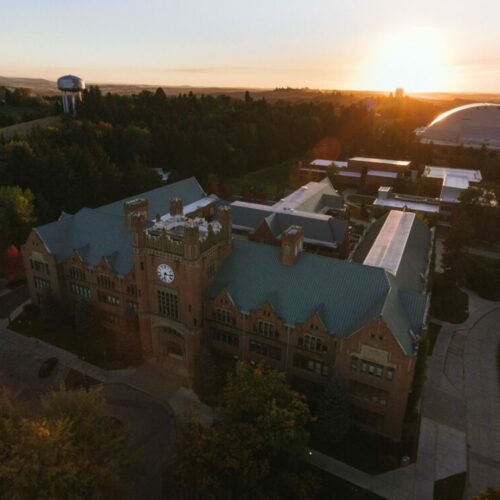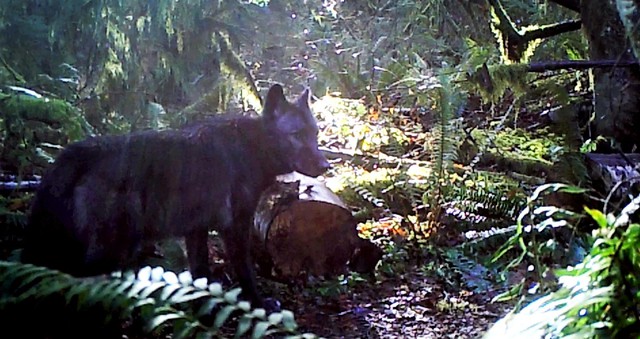
Western Washington Has A New Wolf Pack, First In Decades
READ ON
There’s a new wolf pack on the western side of Washington’s Cascade Mountains. Wildlife officials say it’s the first time they’ve documented a pack there since wolves were wiped out decades ago.
In an annual report on wolf numbers released Friday, the Washington Department of Fish and Wildlife said a male wolf with a radio collar had traveled around Skagit County this past winter, along with a second wolf, a female. They named the pair the Diobsud Creek pack.
“That’s been really promising,” said Ben Maletzke, WDFW statewide wolf specialist. “The number of wolf packs, that’s kind of our money in the bank for future recovery.”
Biologists said the expansion of territory in the state could be a sign that wolf recovery is on track – and that an increase in breeding pairs throughout the state could lead to an increase in wolf numbers in the years to come.
There are at least 126 individual wolves, 27 packs and 15 breeding pairs noted in this most recent count, which included numbers gathered through aerial surveys, remote cameras, wolf tracks and signals from radio-collared wolves.
The survey found five new packs, Butte Creek, Nason, OPT, Sherman, Diobsud Creek and Nanuem. One pack, known as Five Sisters, disbanded. Biologists aren’t sure why.
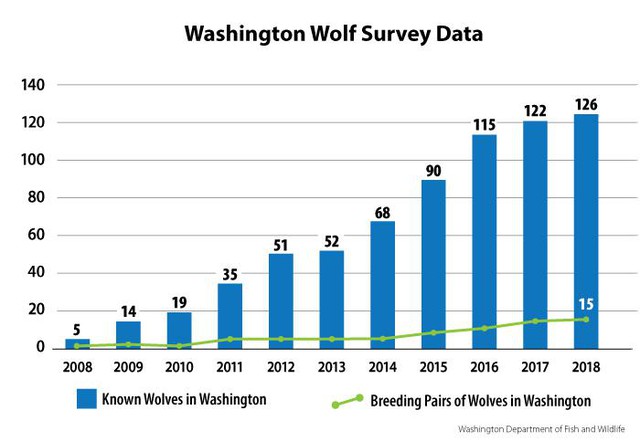
The number of known wolves and breeding pairs in Washington since 2008. Courtesy Washington Department of Fish and Wildlife
But conservation groups said they were concerned that wolf population estimates had not grown much since 2016, when officials counted at least 115 wolves. (In 2017, they estimated there were 122 wolves in the state.)
“Really it seems almost like stagnation to us because we’ve had such larger increases in years past that the last two years we’ve reported these numbers, we haven’t seen the growth that we’ve been hoping for,” said Sophia Ressler, a staff attorney with the Center for Biological Diversity.
Maletzke said numbers in 2018 had increased by 3%. He said, as wolves expand their range into the North Cascades, Southern Cascades and coast, their numbers could spike in the coming years.
“I would expect to see, perhaps, those numbers increasing at a little faster rate in the future, but time will tell, and the wolf will tell us best,” Maletzke said.
In 2018, the state confirmed 11 cattle and one sheep depredation, with another 19 cattle and two sheep injured. Officials said five packs were involved in at least one known livestock death.
In response to those depredations, the state killed one wolf from the Togo pack, two wolves from the OPT pack, and one wolf from the Smackout pack. Those kill orders brought challenges from conservation groups, including the Center for Biological Diversity.
“Those attempts to deter predation on livestock are ill-conceived. They go against science, and I don’t think that killing members of our wolf packs is helping wolf recovery,” the center’s Sophia Ressler said.
Wolves were nearly eliminated from the state by the 1930s, from over-hunting and trapping. Since 2008, when they starting moving into the state, their numbers have since rebounded.
Currently, they are federally protected in the western two-thirds of the state, although the Trump administration recently proposed delisting gray wolves in the Lower 48. If that happened, wolves in Washington and Oregon would receive only state protections.
In Oregon, wolves are also expanding westward. There, increasing wolf activity has been reported in the southwestern part of the state. Wolves have also been spotted near Mount Hood.
As wolves move to other areas in both states, WDFW’s Ben Maletzke said it’s important for people to report any wolf sightings.
Copyright 2019 Northwest Public Broadcasting. To see more, visit nwpb.org
Related Stories:
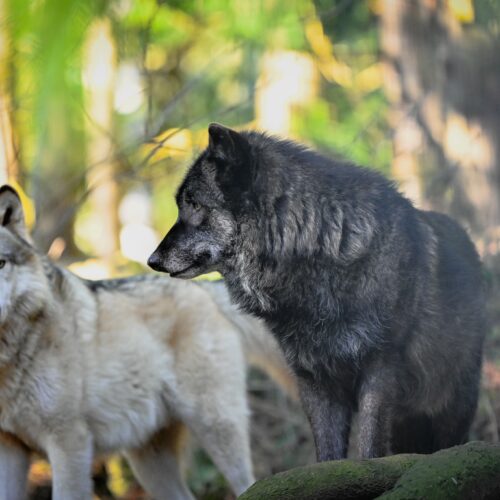
Complaint to federal agency over Washington animal organization
In Skagit County, a nonprofit that houses a number of animals, including exotic ones, is in continued legal battles. A law firm that advocates for animal rights is claiming the organization may have violated the Endangered Species Act, by, as the law firm claims in its complaint, the illegal euthanization of wolves.
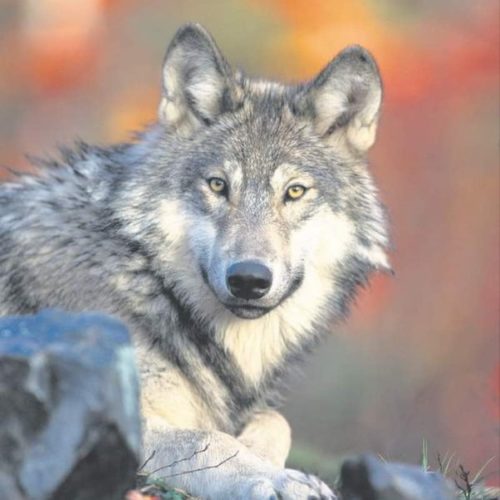
Wolves remain endangered in Washington state
Washington state’s Fish and Wildlife Commission voted to keep gray wolves’ endangered status. (Credit: William Campbell) Listen (Runtime 0:54) Read Gray wolves will keep their endangered status in Washington state.
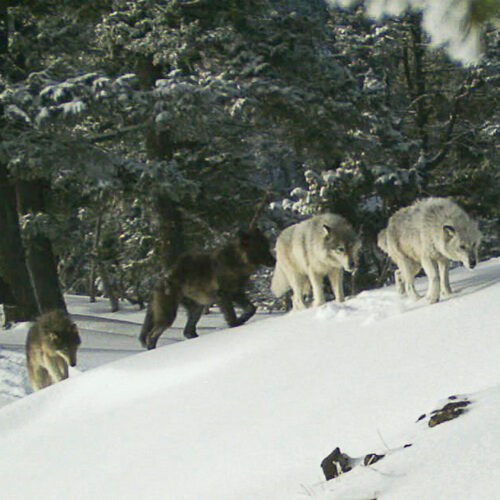
Nez Perce Tribe honors the wolf
In this Feb. 1, 2017, file image provided the Oregon Department of Fish and Wildlife, a wolf pack is captured by a remote camera in Hells Canyon National Recreation Area







